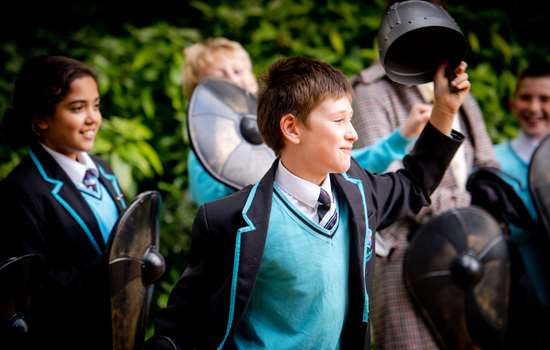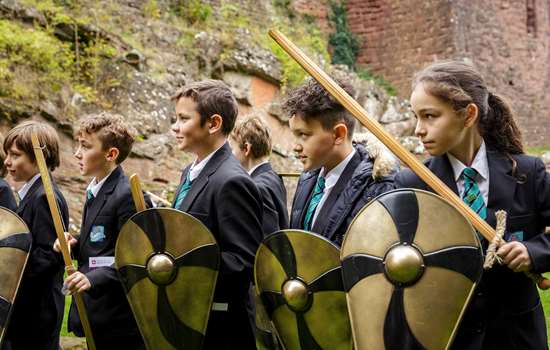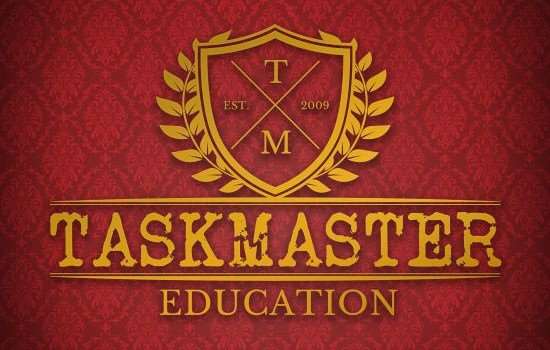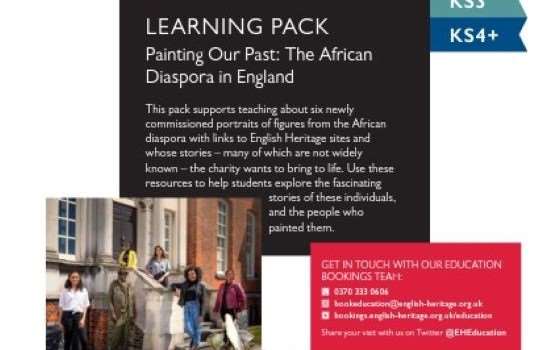Curriculum links
Support your teaching in the classroom by stepping out of it. A visit to St Augustine's Abbey will help you bring learning to life, covering multiple topics across the curriculum and key stages.
- KS1 History: Significant historical events, people and places in the locality
- KS2 History: A local history study. Britain's Settlement by Anglo-Saxons and Scots, Christian conversion. Viking and Anglo-Saxon struggle for the Kingdom of England to the time of Edward the Confessor. A study of an aspect or theme in British history that extends pupils’ chronological knowledge beyond 1066
- KS2 Religious Studies: Religion in daily life. Why an abbey was built on the site and who lived there
- KS3 History: A local history study. The development of church, state and society in Medieval Britain 1066-1509 and in Britain 1509-1745. A study of an aspect or theme in British history that consolidates and extends pupils’ chronological knowledge from before 1066
Free Self-led Visits
Book a free self-led visit to St Augustine's Abbey and organise your day to suit your curriculum objectives. Explore the extensive abbey ruins, including the excavated remains of England’s oldest churches, and spot the features of the Norman cathedral-sized church. Visit the museum to discover the story of the site, from the first Christian Anglo-Saxon king and first Anglo-Saxon monastery in England, to Norman updates, the suppression of the monasteries and a Stuart garden.
Enquire nowPlan your trip
We have a wide range of materials to support your visit and make school trip planning easy. You can find all our site-specific information and tools below, and further information on our what to expect page.
Download our free resources to help you make the most out of your visit and create unique learning experiences before, during and after your trip. We also offer free planning visits once you have made a booking, plus a 20% discount on the official English Heritage guidebook for your place of choice.
Once you book your visit you’ll be sent a visit permit, which you’ll need to bring with you on the day.
Visit our bookings page to start planning your trip!
Learning Resources
-

Teaching Anglo-Saxons and Normans
Use historical information, learning activities and tips from our historians, curators and educational experts to support your teaching of the Anglo-Saxons and Normans.
-

Teaching Medieval History
Use historical information, learning activities and tips from our historians, curators and educational experts to support your teaching of medieval history.
-

Taskmaster Education at English Heritage
We’ve teamed up with Taskmaster Education to bring an extra layer of fun to school visits to our sites. Find out more about how we can help you create a Taskmaster-style experience during your trip.
-
A Mini Guide to Medieval Monks
Find out more about different medieval monastic orders with our short animation.
-

Painting Our Past: The African Diaspora in England Learning Pack (KS1-KS4+)
Use our learning pack to explore a series of portraits commissioned by English Heritage depicting six historic figures from the African diaspora whose stories have contributed to England’s rich history.
-
Enquire now
0370 333 1181
-
Visit our bookings page to start your enquiry. All bookings must be made at least 14 days in advance. Please make sure you check our terms and conditions ahead of your visit.
If you’d like more information about a site or one of our workshops, get in touch using the online form on our bookings page to speak to your local Learning and Participation Officer. We look forward to seeing you soon.
